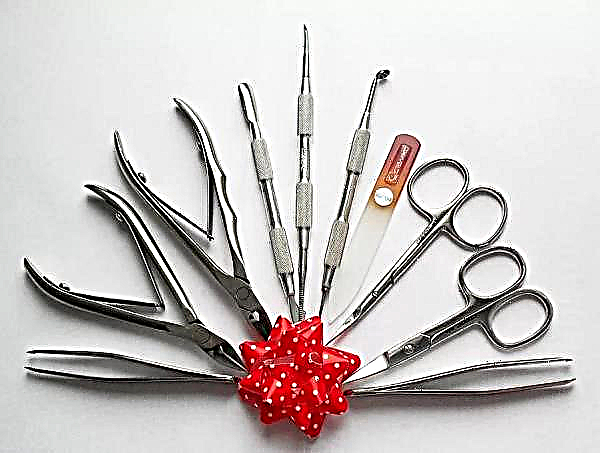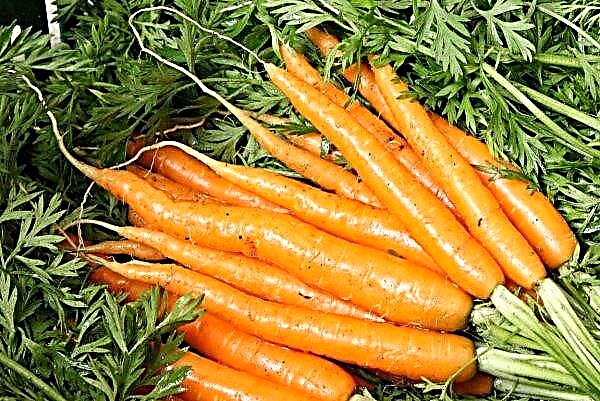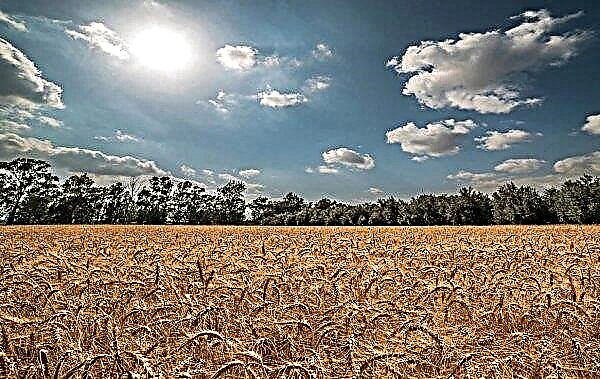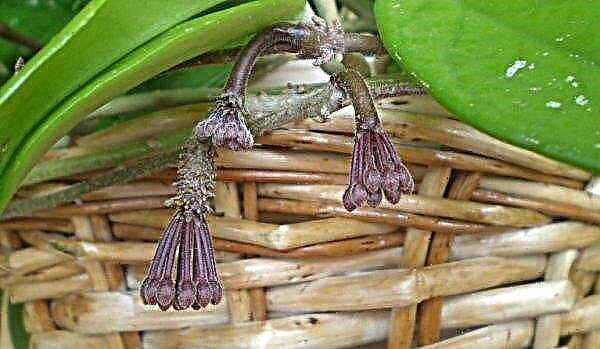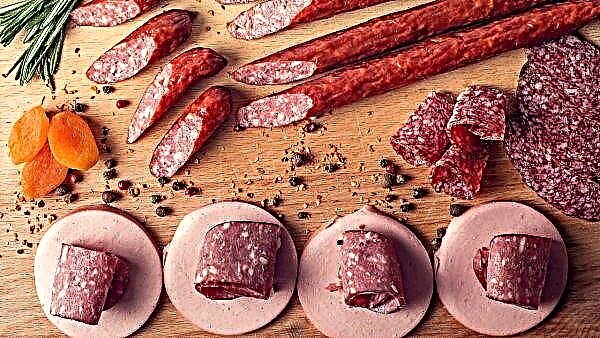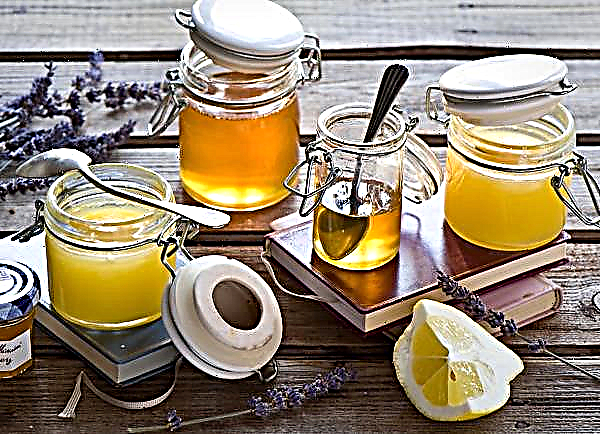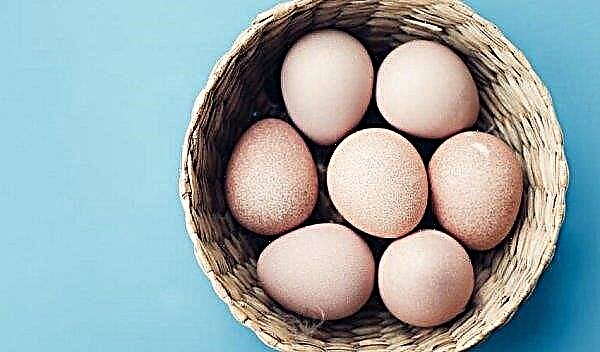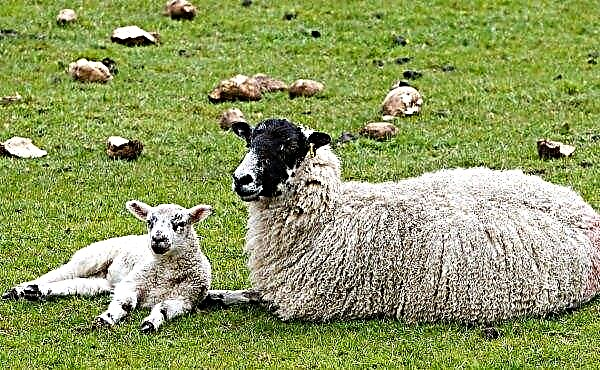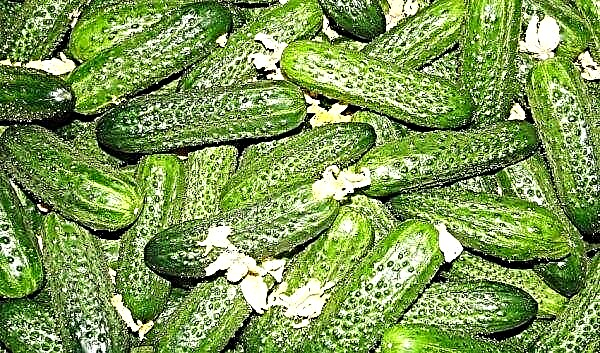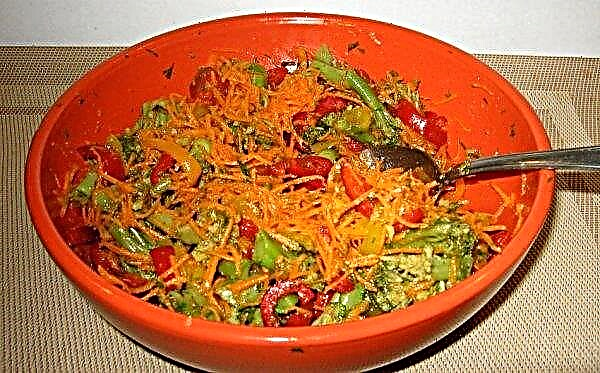Currant is one of the most popular plants among gardeners. It is easy to grow on personal plots, the berry has a huge list of useful properties and is widely used in the preparation of various drinks, jams, preserves, etc. There are quite a few varieties of this culture. In the article we propose to consider the variety Andreichenko.
Description of the variety of redcurrant Andreichenko
The shrub is tall enough for this crop - it grows to 1.5 m. The crown is sprawling, round in shape. The shoots of the plant are erect and powerful. Color dark orange, matte. Closer to the top, the color of the shoots changes to grayish-green. The surface is smooth.
The density of the leaves on the bush is quite large. The five-pointed shape of the leaf has a dark green color. The surface is not even, glossy. The tip of the sheet is lowered down.

Selection history
The indicated variety appeared in the middle of the twentieth century due to pollination under natural conditions of one of the varieties of red currant. Further, workers of the Novosibirsk station worked on this variety, after which the variety was named Andreichenko. Gardeners also call it Beloved Currant.
Did you know? Russia takes the leading place in the world in terms of currant production.
The first plantings of the variety were carried out at the end of the 80s of the last century in the Urals, Siberia and the Middle Volga region. These regions are the most suitable for good growth of bushes. This currant has always been quite popular in the post-Soviet space due to the high level of winter hardiness.
Appearance, characteristics of berries, ripening time, yield
The berries are not large, but elastic (in diameter reach 6 mm). A bush with ripe berries looks very beautiful because of their bright red color. The taste is sweet, with notes of acidity. The weight of the berry is about 1 g. The seeds are quite large and feel good with food. The brushes are long and dense, which allows many berries to grow on them. Toward the end of the brush, the berries are smaller - up to 0.6 g.

In the second year after planting, the bushes bring the first crop. It matures in late July. A feature of this variety is that after ripening, the berries do not fall from the bush for about a month, while remaining elastic and beautiful. On average, about 5 kg of berries are harvested from one plant.
Consider the chemical composition of berries:
- the amount of sugars - 6.8%;
- catechins - 550.9 mg / 100 g;
- ascorbic acid - 40.9 mg / 100 g;
- dry soluble substances - 11.7%;
- titratable acidity - 1.7%.
 The composition of red currants
The composition of red currants
Advantages and disadvantages of the variety
Variety Andreichenko really deserves great attention from gardeners.
- We list its main advantages:
- the berry tastes good;
- does not lose its appearance during transportation;
- a large yield for such a small bush;
- 2 years after planting, pleases the fruit;
- high level of winter hardiness;
- long stored fresh.
- Gardeners can bring inconvenience to the disease and pests, so the following can be attributed to the disadvantages of the plant in question:
- high probability of getting anthracnose;
- often attacked by leaf aphids.
Agricultural technology
For each fruitful plant, it is important to follow the rules of agricultural technology, because this is the key to a good harvest. Consider the basic rules for caring for the described variety.
Did you know? Green currant fruits contain 4 times more vitamin C compared to ripe berries.
Seat selection and landing
Despite the fact that it is difficult to call currants a demanding plant, regions with warm winters are not suitable for the variety Andreichenko. The high temperatures and drought, characteristic of the southern regions, do not like the plant. Best of all, Beloved currant feels in areas with a harsh climate.

The optimal type of soil is loam or sandy loam. The chosen place should be open to the sun and protected from the wind - a strong wind can break the branches of the plant. The shrub loves moisture, so it is good if the groundwater level is not far from the surface of the earth.
Landing Algorithm:
- Prepare the seat a few weeks before landing. Add organic fertilizers to the plot. Remove all weeds.
- A pit is excavated, the size of which depends on the age of the planting material. As a rule, it has parameters 50 × 50 cm. The roots should feel spacious in it.
- Planting a plant is recommended in the open ground in early autumn. If you plan to plant several bushes at once, then the ideal distance between them will be 1.5–2 m.
- In a dug hole add 2 buckets of compost, 2 tbsp. tablespoons of sulfuric potassium, 3 tbsp. tablespoons of phosphate and 400 g of wood ash. Submerging a seedling in a fertilized pit is recommended after a couple of weeks.
- After a while, the bush is carefully placed in a prepared hole. In this case, the root system must be carefully straightened.
- Tilt the seedling a little and cover it with earth. Under slope, the bush grows better.
- It is necessary to fill the pit with soil and water abundantly (1-2 buckets of water).

Care
Regular watering (1 time per week), periodic loosening of the soil and timely fertilizer application (2 times a year) can guarantee you a good return in the form of a wonderful crop.
The lack of moisture for the plant adversely affects the berries: they do not pour in fully and decrease in size.
Important! Do not forget about watering the bushes during the period when the formation and ripening of fruits is in progress. This is very important for the future harvest.
At the end of March or the beginning of April (the main thing is for the snow to fall), mineral and organic top dressing should be applied under the bushes. In the fall, one organics will be enough.
The first three years at the beginning of the vegetative period, bring humus under the shrub (1 bucket). For good shoot growth, feed the plant with this mixture: 100 g of phosphate + 10 g of urea + 10 g of potassium sulfate. In the fourth year, increase their number by 1/3.

Pest and Disease Control
Culture is often infected anthracnose. The infection affects the entire Kryzhovnikov family in the garden. The disease leads to drying of the leaves and significantly reduces the volume of the crop.
In order that it does not affect plants, it is necessary to process the bushes before and after harvest:
- after snow melt, spray with copper sulfate;
- as soon as the bush completes flowering - 1% solution of colloidal sulfur;
- after harvesting - 1% Bordeaux liquid.
Important! Infections and pests characteristic of red currants do not like tomatoes and garlic. Plant them next to the currant: such a neighborhood scares them away and helps protect your crop.
For prevention, you need to regularly dig the soil near the bushes, remove the fallen leaves in time and cut the old shoots.
Of the insects it is worth noting leaf aphids - It is she who most often damages the leaves of shrubs. Helps in the fight against this pest Karbofos (40 g per 10 liters of water). Also do not forget about folk remedies. Bushes are treated with a solution of water with garlic or soap. They pollinate the plant with cinnamon or dust from tobacco.
Also do not forget about folk remedies. Bushes are treated with a solution of water with garlic or soap. They pollinate the plant with cinnamon or dust from tobacco.
Trimming and shaping a bush
Trimming red currants has its own characteristics. Unlike black, red is recommended to be cut at the beginning of the vegetative period or after harvesting. The branches of red currant do not need to be shortened - this can adversely affect the productivity of the bushes.
Trimming shrubs should begin in the third year after planting. Until this time, the plant should shoot enough shoots that will become skeletal branches of the bush in the future. When doing the first pruning, you need to choose the most powerful shoots (5-6) for further fruiting, and remove the weakened and dry ones. Also check for branches that obscure other fruitful shoots and interfere with them - they must be removed.
Anti-aging pruning of the plant is carried out in the seventh year after planting, as a result of which only young shoots should remain on the bush.
 Fig. 1. Currant pruning: a - annual seedling; b - a biennial bush; c, d - shortening of shoots. Fig. 2. Currant bush before anti-aging pruning (a), after it (b) and pruning of a neglected bush (c)
Fig. 1. Currant pruning: a - annual seedling; b - a biennial bush; c, d - shortening of shoots. Fig. 2. Currant bush before anti-aging pruning (a), after it (b) and pruning of a neglected bush (c)
Preparing for the winter
Andreichenko was once fond of red currant for his stamina in relation to the cold winter. This species is not afraid of Siberian low temperatures. However, gardeners still recommend laying a layer of organic matter around the trunk of the bush to insulate the root system before winter.
Even at the time of planting, the level of the borehole soil should be slightly lowered. This deepening will allow snow to accumulate near the plant, which will protect against severe frosts.

Harvesting and transportation of the crop, shelf life of berries
Harvesting currants is not difficult: the berries of this variety ripen at the same time. No fruit shedding for a month after ripening. Berries easily come off the brush and do not crush during the collection. They are collected in small containers. Shifting the crop is not recommended.
Despite the fact that the shell of the fruits is thin, they easily tolerate transportation and do not lose their presentation for a long time. Fresh currants can be stored in the refrigerator for up to two weeks, but at the same time it must be kept in a separate container.

According to the reviews of gardeners and the above information, we can conclude that the currant of the Andreichenko variety is perfect for a summer house or a private house. Caring for the plant will not cause you problems, and the harvest will delight your taste for many years in a row.

